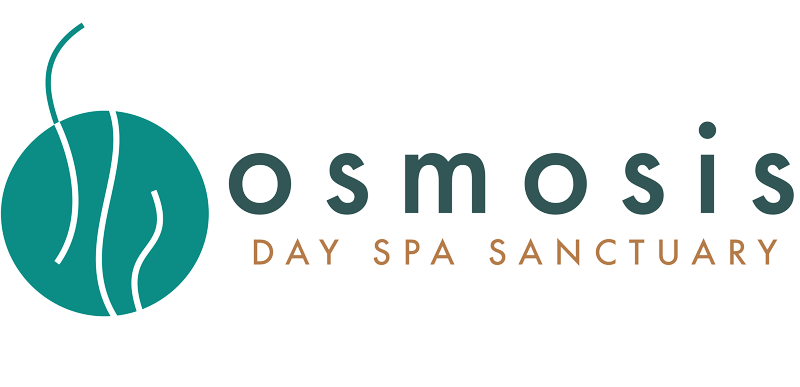Osmosis Garden fuses traditional Japanese structure, casual California lifestyle
I am lying on a bed of chamomile, deeply inhaling its gentle fragrance as I listen to a waterfall flowing behind me. I don’t want to leave here but am too energized to stay, so I rise and follow a stone path around a heart-shaped koi pond and across the small waterfall.
There, I take one last look at the guardian stones — boulders, practically — and wish them well.
“Every Japanese temple garden has these three stones, kind of a trinity of spirits to watch over the well-being of the garden,” Osmosis founder Michael Stusser had told me during a tour of his haven that morning. “They’re usually quite small and subtle. It’s a break with tradition to have guardian stones so large.”
So these particular stones create a second metaphor, one for adapting the traditional structure of the Japanese garden into a uniquely Northern Californian meditation retreat, where Osmosis guests can prolong the exploration and rejuvenation of the spirit that Stusser’s spa treatments encourage.
That, and postpone the stress of getting back behind the wheel that steered them 75 miles north of San Francisco and Oakland to state Historic District No. 1, Freestone.
“You’d see guests in the parking lot after their treatments saying, ‘I don’t really mind driving, but why don’t you drive?’ And, ‘Well, I could drive, but you said you don’t mind,’ ” Stusser said. “Now they can savor that quintessential at-oneness with the moment and enjoy being relaxed. It’s so hard to get there.”
The 1-acre meditation garden at Osmosis may seem like an afterthought for Stusser, whose spa is toasting its 20th anniversary as the nation’s sole purveyor of the Japanese enzyme bath but whose garden opened only in 2002.
Stusser, however, began mixing philosophy and landscaping as far back as the late 1960s, when he joined organic gardening advocate Alan Chadwick at UC Santa Cruz in forming the school’s Center for Agroecology. He migrated to Sonoma County and became the gardener for the Farallones Institute in Occidental.
A student of Zen meditation, Stusser pursued a landscape gardening apprenticeship in the early ’80s in Kyoto, Japan, where he bonded with fellow apprentice Robert Ketchell. “We kind of had this idea that someday we’d build a garden together,” Stusser said.
Their paths diverged then — Stusser joining a Japanese Buddhist monastery, where he became a devotee of the enzyme bath for a then-painful case of sciatica, and Ketchell developing an expertise in Asian gardens that would lead to the publication of many writings, including the 2001 book “Japanese Gardens in a Weekend.”
On his return to Sonoma County, Stusser slowly built his enzyme baths in Freestone, on a now pristine property that used to contain a junkyard full of railroad cars and other equipment. Ever the gardener, in 1989 he landscaped the front of the Victorian main building and installed an other-worldly tea garden for the enjoyment of guests preparing for a bath or massage.
With its waterfall, bridge and ornamental rocks and trees, it hinted at Stusser’s larger vision.
“People loved the tea garden,” he said. “They would put a postcard of it on the refrigerator to remember the experience. And after treatment they’d say, why can’t we go back to the garden — well, other guests were in there now. So early on I decided the tea garden would be the appetizer and the meditation garden would be the main course.
“It just took about a dozen years to find the time and the resources for doing it. And we waited because we didn’t want to compromise the vision.”
A serendipitous reconnection with Ketchell, now the British Japanese Garden Society chairman in London, brought the vision to paper, in a form that incorporated the many elements of Stusser’s dream in a very real-life way.
“He sent a design that contained all of the elements of the garden that we could never quite picture how to bring together,” Stusser said. “The pond, the waterfall, a meditative place, beds where you could lie in chamomile, rock arrangements — but there were flow issues so that people getting massages at the outside pagodas could walk through without disrupting the garden. And we wanted to have a real feeling of depth, a perspective that captured the hillsides beyond, called shakkei, which means ‘capturing the landscape alive.’ ”
There was much work to be done before anyone would be lying around in chamomile, of course. Ketchell chose for the garden’s theme a Zen Buddhist parable of Chinese origin that is the story of the ox and the ox herder, what Stusser describes as a “metaphor for the enlightenment experience.” In the 10- stage parable, traditionally illustrated by woodcuts, the ox herder searches for the ox, captures and tames it, then breaks free of his attachment to the ox to discover his own identity.
At Osmosis, large rocks — carefully selected by Stusser, to Ketchell’s specifications, over three years of visits to a landscape supplier — illustrate the story. In the final stage, “Entering the Market with Open Hands, ” the rocks representing the wizened ox herder and a respectful villager seem to wear expressions.
But there are no plaques or other explanations of the stages for robed guests who stroll past hummingbird-pleasing Chinese lantern (Abutilon x hybridum) along the garden’s narrow, bamboo-lined entry path. They encounter the first stage of the parable, along with Asian garden mainstays such as camellias, rhododendrons and maples, as they approach the Japanese entry gate, which bears symbols Stusser says translate to “a good feeling” in Japanese.
They then must make a conscious decision to enter the meditation garden by sliding the gate open and stepping over the threshold. They can stop here and wash in the tsukubai, a spring where, if they peer through a hole in the hedge they can glimpse the garden’s heart.
“It’s the whole concept of hide and reveal, an incredibly important part of the Japanese garden that creates a kind of drama in the layout,” Stusser said. “It really works. It’s a way of helping to focus people’s attention on one-pointedness, part of the idea of Zen where you’re trying to get people’s attention focused on the moment and bring them to a point of greater awareness. ”
Even the rusted dump truck the garden guest encounters next holds meaning for Stusser. It was left on the property and remains, now partially covered in foliage, as a link to the past.
As the path continues alongside Salmon Creek, where gardener Louis Fameli says sturgeon come to spawn and otters come to hunt the pond’s koi, the landscape begins to open up. An ornamentally pruned Scotch pine stands sentry near a clearing that marks the open Moon Gate to the temple, through which the heart is exposed.
Guests may sit in the temple and gaze at the entire garden, or step to the side of the pond shaped like the Chinese character that means heart and engage the koi, clearly seen in the newly filtrated waters. To the right are the rocks for the fourth stage of the parable and a path that leads beyond hiding-and-revealing hedges of Carolina laurel cherry (Prunus caroliniana), California wax myrtle (Myrica californica) and Euonymus japonica ‘Aureo Variegata’; to the left is the final stage of the parable and the guardian stones.
Other elements of the garden’s heart include Turtle Isle (a symbol of longevity and good luck), the Stone of Good Fortune (a red rock with nine gold coins buried below, as recommended by a feng shui expert for courting good fortune) and the three lush Treneague Chamomile beds. Tranquility reigns due to a strict policy of “today’s guests only,” but the public can tour the garden on designated open dates or for one of the moon-viewing benefits Osmosis schedules in the summer.
“We didn’t realize it, but we created a natural outdoor stage,” Stusser said, pointing to a small green spot across the pond. “We started out thinking we needed to do it on the full moon, but the full moon rises over there (at the far southern edge of the garden), quite late, and people weren’t leaving until it came up.
“So, we started doing a quarter moon, which is high in the sky early, so when it gets dark it’s right here.”
Stusser has adapted other Asian traditions as he’s seen fit for his Northern California neighborhood. A Japanese garden would have cherry blossoms, but Osmosis’ deer would have those for dinner. A Japanese garden would have moss growing among rocks, but Osmosis’ summer climate won’t cooperate.
So the magnolia substitutes for the cherry tree as spring’s harbinger, and elfin thyme (Thymus Serpyllum ‘Elfin’) fills the space the moss wouldn’t.
“It’s obviously not Japan, so we have to use different plants,” Stusser said. “We had to come up with a whole different tapestry and palette for how to duplicate the textures and tones of the garden and plant material. What we wanted to do was take the feeling of the style without straitjacketing ourselves with rigid tradition. We wanted to create a mix that’s really comfortable for people, not pretentious, but tasteful and inviting.”
It’s a cultural recipe that explains, in the American affinity for all things supersized, those big guardian stones. And perhaps the resulting blend of structure and informality explains why, in the space between longing to linger and preparing to leave, a bit of lollygagging atop the chamomile seems not a bit out of place.

